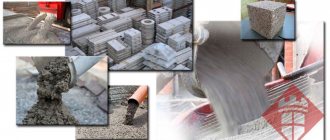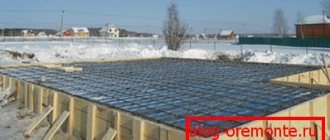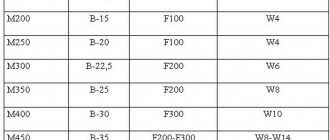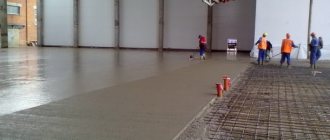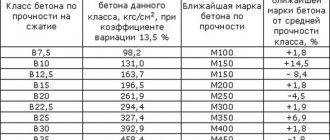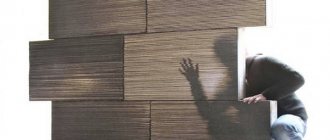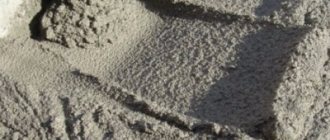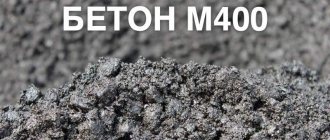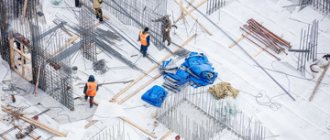Composition and classification
Among the main requirements for hydraulic concrete is a high degree of waterproofing under conditions of sudden temperature fluctuations and dynamic loads.
That is why the concrete solution must comply with current building codes and standards.
GOST 26633 is the main technical document that should be followed when preparing a concrete mixture. In the same standard you can find requirements for the composition.
To prepare hydraulic concrete, it contains the following main components:
- Sulfate-resistant Portland cement, which is used as a binder. This component also ensures the structure’s resistance to aggressive waters.
- Quartz sand, which plays the role of fine aggregate. This bulk building material is specially designed to reduce the likelihood of concrete erosion.
Important: quartz sand must be of the highest quality category (it should not contain fine crushed stone, gravel or other impurities). It is strictly not recommended to replace quartz with river, sea, and even more so quarry ones. Such negligence can lead to a violation of the stability of the building structure and its complete destruction.
- Sedimentary rocks (gravel or crushed stone) that act as coarse aggregate. The main qualities of such an additive are hydrophobicity and frost resistance. Here, special attention should be paid to the grain fraction of these materials, on which the physical and mechanical properties of the mortar will depend.
- Various additives used to improve the properties of the concrete mixture. These components increase the threshold of sensitivity to temperature fluctuations, aggressive effects of the aquatic environment, prevent the formation of cracks and increase resistance to mechanical deformation.
Composition of hydraulic concrete
The preparation recipe, the percentage of a particular substance, the fundamental parameters and characteristics corresponding to hydraulic concrete are established in GOST 26633 (clause 3).
Material composition
Special concretes must contain the following components:
- binders;
- finely ground additives;
- sand;
- coarse aggregate;
- water.
To impart the necessary technological properties, various additives are introduced into the composition of hydraulic concrete - water repellents, plasticizers, sealants, etc. Their list is determined by availability in a particular region and the tasks set for builders.
Binders
Binders include the following types of cements:
- ordinary Portland cement;
- pozzolanic and slag (not used in areas of variable water levels due to reduced frost resistance);
- sand-pozzolanic;
- sulfate-resistant;
- plasticized.
The use of other cement varieties is permitted only if there is justification in the design documentation. The binder used in mortars for concreting massive structures must have a heat of hydration of no higher than 50-60 cal/g.
The choice of cement takes into account the aggressiveness of the aquatic environment in accordance with the GOST 4796-49 standard.
Finely ground additives
Finely ground additives are used to save cement, reduce heat generation and volumetric deformations. The tensile strength of the tested concrete sample, in which 20% of the cement is replaced by a finely ground additive, should not decrease by more than 30%.
Blast furnace slag, hydraulic and other finely dispersed components are used as additives.
This video will also tell you about special hydraulic additives:
Sand
Sand for the production of hydraulic concrete is represented by natural and artificial bulk mixtures with a particle size of no more than 5 mm. The particle size distribution is dominated by medium and fine fractions (up to 1.2 mm - 30-70%, up to 0.3 mm - 5-30%). The content of clay and sulfur compounds in sand is set at 1-2%.
Coarse aggregate
Coarse aggregate – gravel, crushed stone or mixtures thereof, having a particle size of 5 to 150 mm. To ensure a uniform granulometric composition, the content of aggregate ½ of the maximum size should be within 40-65% of the total mass.
In addition to the content of foreign impurities in the material (no more than 4.5%), the GOST 4749-49 standard establishes the values of water absorption, density and tensile strength.
Water
Water for preparing concrete solutions must have a pH of at least 4 (slightly acidic, neutral or alkaline) and a maximum salt content of 35 g/l. The optimal amount of sulfate ions for all types of hydraulic cements should not exceed 2.7 g/l.
If their concentration is higher, sulfate-resistant cements should be used for mixing the solution.
Requirements, types
Taking into account the circumstances and conditions of use, the grades of such concrete must meet special requirements for strength, water resistance, and frost resistance. It is divided into several types:
- underwater - he is constantly under water;
- for variable water zones;
- surface;
- periodically washed with water.
Depending on the grain size of the particles in the composition, it can be fine-grained or cast. In addition to these types, there are concretes used in structures that can withstand water pressure and in non-pressure structures, as well as massive and non-massive mortars. Depending on the arrangement of elements made of such concrete in a structure, it is available for external and internal areas.
For this construction waterproofing material there is a mandatory list of requirements. First of all, water resistance (sealing) is resistance to the destructive influence of water. Secondly, water impermeability. This is the value of the highest liquid pressure for seepage into concrete (from 2 to 8 am). This indicator is also assessed by the filtration coefficient. The test solution is kept for 180 days.
Thirdly, frost resistance - the indicator consists of the number of freezing/thawing cycles during which concrete loses 25% of its strength. The frost resistance value is usually from 50 to 300 or more. In this case, the concrete is tested in freezing units. Compressive, tensile, bending strength and low heat generation during drying are also important.
Workability of concrete mixture and material consumption per 1 m3 of concrete, kg
Other requirements and characteristics: low shrinkage, high deformability, resistance to abrasion by aqueous media and small particles. All requirements must be present in varying proportions, depending on the conditions of use.
Classification, technical characteristics
Experts classify hydraulic concrete according to its technical characteristics specified in GOST 26633-2012. The main ones are considered to be compressive strength, bending strength, as well as axial tension; water resistance and frost resistance tests are carried out.
The most common method for determining the strength of a hardened composition is the destruction of a cube with an edge of 15 cm. For hydraulic concrete, this indicator can vary in strength classes from B10 to B40, depending on the technical requirements. Axial tension is marked with the indices Bt 0.4 - Bt 4 and taken in increments of 0.2, they show the formation of a crack when the structure is stretched. Similar indicators for bending from Btb 0.4 - Btb 8, where the same step is applied, and the load is applied to bend the element until a crack appears.
The water resistance grade is measured at the age of 180 days after pouring the solution. During operation, hydraulic concrete cannot allow water to pass through. Therefore, the grade of its water resistance ranges from W2 - this means that the sample can withstand a pressure of 0.2 MPa during testing, to W8 in increments of 2. When producing waterproof concrete for special purposes, plasticizers are used, the proportion of cement increases, and the indicator is brought to W12.
Based on frost resistance, hydraulic concrete is divided into grades from F50 to F300 in increments of 50. The number after the index means the number of freeze-thaw cycles that the composition can withstand before losing a quarter of its strength. The addition of certain components allows you to obtain hydraulic concrete with an F400 index. The test is carried out in a freezer with varying temperatures for 28 days, and a frost resistance mark is assigned.
In accordance with GOST, hydraulic concrete must have a certain mobility so that it can be laid correctly. The composition must harden evenly, without delamination or cracking, and gain strength within the required period.
Main technical characteristics of hydraulic concrete
The composition, properties, and brand of hydraulic concrete will determine its technical characteristics.
The fundamental parameters and characteristics include:
- the amount of compressive strength or bending strength. Most structures made of hydraulic concrete have significant weight, which increases the vertical force load. That is why, when controlling production quality, priority attention is paid to this fundamental indicator. The strength of the material is tested by placing a prototype (concrete cube) in water for up to 180 days. Based on the test results, hydraulic concrete is assigned class B3.5-B60 (the most popular in the field of industrial and civil construction is the range from B10 to B40);
- tensile strength. Many structures that are less subject to vertical loading experience axial tension. Testing the resistance of concrete to axial tension is carried out in laboratory conditions. Based on the test results, classification is made: “hydraulic concrete grade Bt0.4-4.0”;
- water resistance indicator. As with tensile strength, water resistance is tested in the laboratory. The test is carried out in underwater conditions, where pressure is gradually applied to the prototype until it is destroyed. Hydraulic concrete is marked with symbols from W2 to W20.
Important: If the structure is planned to be operated in seawater conditions, it is recommended to use a concrete grade of W4 and higher;
- level of frost resistance. Taking into account the unfavorable climatic factors of domestic regions, frost resistance is almost the most important indicator. Water, penetrating into cracks and freezing in them, expands, thereby damaging the strength of a structure made of concrete. The frost resistance level (F) indicates how many alternating cycles of freezing and thawing the material can withstand with a loss of strength of no more than 15%. Based on the results of frost resistance studies, concrete can be assigned a class from F50 to F300.
Additional strength characteristics, water resistance and frost resistance are achieved through the use of special additives (mortar improvers).
Such components include hydroconcrete, sodium aluminum methyl siliconate, polyhydrosiloxane, phenylethoxysiloxane, Liga Natriumoleate and many others.
No less important are the operational characteristics of the finished structure made of hydraulic concrete (shrinkage amount, resistance to external mechanical deformation, resistance to pumping pressure and water flows).
Frost resistance
In conditions of high humidity, special attention is paid to temperature changes with the possibility of water freezing. As you know, when the liquid expands, it crystallizes and causes damage to the building materials into which it managed to penetrate. To prevent this from happening to a critical structure, special hydraulic additives and plasticizers are added to the solution in production to increase the concrete’s resistance to hardening.
Frost resistance grade F shows how many cycles of complete alternating freezing and thawing a concrete sample can withstand with a loss of strength of no more than 15%. For a hydraulic mixture, tests are carried out on water with its heating and transformation into ice.
Based on the results of the study, hydrophobic concrete is assigned a frost resistance grade of F50-300.
Laying hydraulic concrete
Let's consider the installation process using the example of the construction of waterworks. The main problems of concreting hydraulic structures:
- the fastest possible work with minimal labor and cost;
- protection against freezing when laying in frost;
- massiveness of the structure, thermal and water resistance of concrete.
When laying concrete, blocks are used. Technology:
- formwork is installed;
- preparation of blocks;
- distribution and compaction of concrete mortar throughout the block;
- curing;
- stripping.
Let's take a closer look at the process.
Installation of formwork
When working with hydraulic concrete, the following types of formwork are used:
- inventory large-panel (wooden, metal, wood-metal panels of large sizes): cantilever; console two-tier;
- inventory small-panel (small wooden plates);
- beams and slabs;
- metal grid;
- wooden;
- permanent reinforced concrete reinforced concrete panels (an expensive method that requires additional costs for machinery and equipment). Suitable for hydraulic station.
The type of formwork is planned at the design stage. When selecting, the type of work, mixture composition, and concreting method are taken into account. Choosing the type of formwork can significantly speed up work and reduce labor costs, and vice versa.
Preparing blocks
Types used:
- on a rocky base;
- on a concrete base.
This is a very labor-intensive process, most of the work is done manually. The distribution and compaction of the concrete solution throughout the block depends on the conditions of the specific environment, the concrete laying technique, and the dimensions of the concrete structure:
- Layer-by-layer laying scheme. Concrete is applied in thin layers (up to 0.5 m). Compaction is done mainly with hand-held vibrators.
- Stepped laying scheme. The mixture is laid out in steps (3-4 m) to the full height of the blocks. Compaction is carried out with packages of vibrators.
- Single-layer - the solution is laid to the full height of the block, but not in steps. Compaction is carried out in two stages - first with bulldozers, then with packs of vibrators.
When laying, choosing the right concrete equipment plays a very important role. If the power of the mechanisms used is inappropriate, the quality of the concrete structure will noticeably decrease.
How to make hydraulic concrete yourself
The production process of hydraulic concrete is similar to the production of standard cement mortars. However, it requires more ingredients and precision in their ratio. In any case, preparing it yourself will be cheaper than purchasing a ready-made mixture.
The cost of homemade hydraulic concrete is reduced by specifying the task at hand. Increased water resistance is necessary when pouring:
- foundation slab;
- floors, basement walls, cellar and garage spaces;
- cesspool;
- decorative pond, swimming pool, water communications.
Frost-resistant and moisture-resistant mixture is advisable for the construction of:
- paths, blind areas;
- walls in contact with blind areas;
- fences, borders and fences;
- street decorative elements;
- load-bearing structures.
The basis of moisture-proof concrete with frost resistance effect is Dehydrol Lux grade 10-2. A solution designed for low temperatures is obtained by using Betonoprava luxury grade 2. For 1 m³ of hydraulic concrete, 4 liters of additive are taken.
When mixing 100 liters of concrete, the following proportions are observed:
- Liquid additive - 0.4 l;
- Cement - 50 kg;
- Sand - 60 kg;
- Crushed stone - 110 kg;
- Water - up to 20 l.
The plasticity of the solution is determined experimentally. The concrete mixer is filled with water, then the liquid additive is poured into it. After this, cement, sand and crushed stone are gradually added. The preparation of hydraulic concrete is completed with five minutes of mixing.
To obtain a high-quality solution that is not inferior in parameters to industrial ones, you must adhere to some rules:
- The ratio of water and cement should not exceed 4:10. The less water, the better the waterproofing.
- 1 m³ of solution must contain at least 350 kg of cement.
- The concrete mixture excludes the presence of clay, loam and other clay aggregates.
- The thickness of the concrete screed must exceed the size of the crushed stone by at least 3 times.
Heat generation, and consequently the shrinkage of the solution, is reduced by adding crushed ice and cooled filler during the mixing process.
After pouring, the hydraulic concrete is thoroughly compacted, which avoids voids.
A monolithic hydroconcrete structure is 100% moisture-proof, which is impossible to achieve in prefabricated structures.
Hydraulic concrete is created for structures located in water or in constant contact with it.
The task of hydraulic (water-resistant) concrete is to ensure long-term high-quality performance of structures and their parts in contact with water.
Pros and cons of hydraulic concrete
Increased strength and water resistance are the main and undeniable advantages of hydraulic concrete .
Among other advantages that a structure made from this category of building material can boast, it should be noted:
- resistance to ultra-low and ultra-high temperatures;
- the likelihood of cracks forming is minimized;
- slight heat loss;
- the possibility of organizing building structures in underwater conditions.
For companies specializing in the construction of structures using hydraulic concrete, we have to admit a disappointing fact: the cost of such material cannot be called budgetary. In addition, to transport it in large volumes over long distances, it is necessary to hire special equipment or prepare concrete mixtures close to the object being avoided, which is also very difficult.

